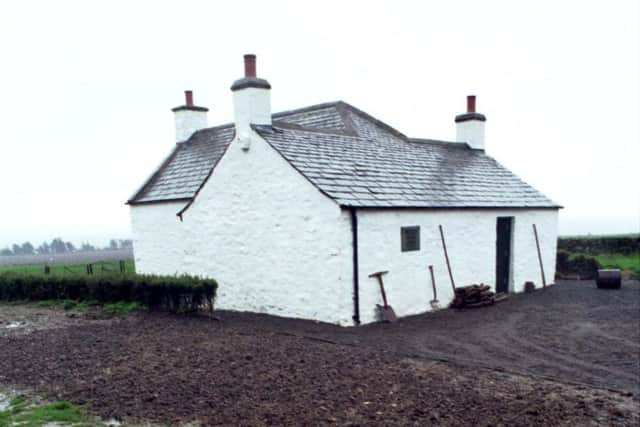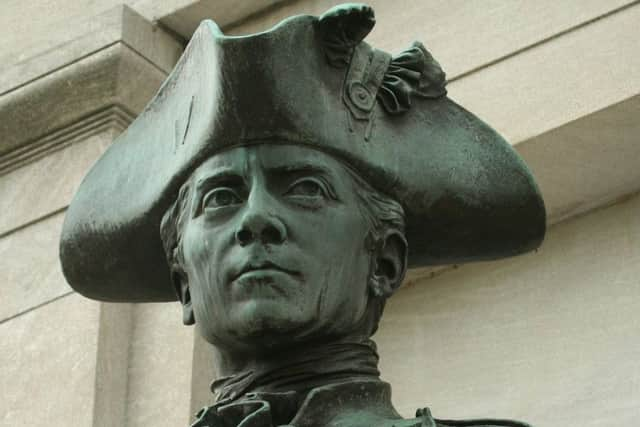On this day in 1792: US Navy founder John Paul Jones dies


His father was born in Leith, where he met the the owner of the Arbigland estate in Leith before being appointed gardener on the estate - but the younger John Paul was more interested in a sea-going career.
By 13 he had entered the service of the British Merchant Marine as a cabin boy - not an uncommon age then for a young man to enter service.
Advertisement
Hide AdAdvertisement
Hide AdJohn Paul was soon making regular voyages to the country where he would one day gain fame - America.


He made many visits to the ports of the thriving and important British colony as well as making inland trips to Fredericksburg, in Virginia, where he was able to visit his older brother.
One booming area of trade in the New World was, of course, slavery - a trade that John Paul soon found himself involved.
Despite the lucrative business, he grew disgusted with the trading of humans and after four years returned to shipping cargo.
Advertisement
Hide AdAdvertisement
Hide AdHe soon became master of his own vessel with a reputation for strictness - and a short temper. When the death of a member of his crew occurred under suspicious circumstances, Jones was accused of wrong-doing.


Though acquitted, the incident dogged his reputation for some time.
Another death involving an alleged mutineer later forced him to flee to Virginia where he added the surname “Jones” to conceal his identity.
In 1775, the British and American colonies went to war. Jones offered his services to his adopted home and was given a commission in the newly-formed Continental Navy.
Advertisement
Hide AdAdvertisement
Hide AdThe fleet was made up of just five ships, but going up against the might of the world’s greatest maritime power failed to concern the intrepid Jones - who had no naval background.


Beginning with attacks on ships off the American coast Jones began to forge a reputation as a tough and skillful commander.
In leading the Providence, he damaged British fisheries off Nova Scotia and captured numerous vessels.
In response to British attacks on American towns, Jones was sent to expand his area of operations.
Advertisement
Hide AdAdvertisement
Hide AdAfter taking command of a new ship called the Ranger, Jones sailed to France where he received the honour of being the first US naval vessel to be saluted by another at sea.


His attacks on Britain started when he raided the English port of Whitehaven and attempted to seize the Earl of Selkirk, at his seat on St Mary’s Isle, just south of Kirkcudbright - an area that Jones knew well.
He also captured HMS Drake after a fight off the Irish coast, but his greatest moment was still to come.
Taking command of a French vessel at Brest - France was allied to the US during the War of Independence - which he named the Bonhomme Richard, Jones sailed for Britain seeking further targets to attack in mid-August 1779.
Advertisement
Hide AdAdvertisement
Hide AdCommanding a fleet of seven ships, Jones sailed round Ireland and Scotland and made for Leith Harbour on 16 September, intending to capture the Harbour and hold it to ransom, but the Scottish weather had other ideas.
Legend has it that the Reverend Robert Shirra of Kirkcaldy may have had something to do with the sudden inclement weather.
When word reached Fife that Jones had been sighted in the Forth, Rev Shirra - fearing a potential attack on Kirkcaldy - led terrified townsfolk to the beach and prayed for deliverance, whereby a “mighty wind” blew the pirate ships away.
Jones’ attempts to get near the port of Leith were dashed, and so he continued southwards.
Advertisement
Hide AdAdvertisement
Hide AdHe soon found himself bearing down on a convoy sailing close to Flamborough Head on the Yorkshire coast.
Leading the convoy was the more powerful vessel HMS Serapis, which soon engaged the Bonhomme Richard in combat. Despite being out-gunned, Jones fought with great tenacity.
To reduce the effect of the discrepancy in firepower, he manoeuvred Bonhomme Richard next to Serapis and lashed the two ships together.
From this position, Jones used small arms to clear Serapis’s weather deck. When two of his subordinate officers began lowering the ship’s flag without orders, the British commander asked if Jones had surrendered.
Advertisement
Hide AdAdvertisement
Hide AdFamously, Jones is said to have replied: “I have not yet begun to fight!”
Ultimately, when a hand grenade tossed from the Bonhomme Richard dropped through a hatch and caused spilled gunpowder to explode all along the gun deck, the British commander hauled down his own flag.
Against the odds, Jones had defeated his opponent and captured their vessel. His own ship was damaged beyond repair and eventually sank, but it was a great victory for the fledgling Continental Navy - as well as a confirmation of his leadership qualities.
In 1788, with the Revolutionary War won by the colonies, Jones entered the service of the Russian empress Catherine II.
Advertisement
Hide AdAdvertisement
Hide AdGiven a rank of Rear-Admiral, he took part in a naval campaign against the Turks.
However, Jones found some members of the Russian military against him, so he left to eventually arrive in Paris, where he remained in retirement until his death on 18 July 1792.
In 1905 his remains were removed from his long-forgotten grave and interred in the Chapel of the US Naval Academy at Annapolis.
The cottage where he was born in Kirkcudbright was opened as a museum in 1993. Restored to look the way it would have in 1747 at the time of Jones’ birth, the cottage houses a video presentation and exhibits about his life and career as well as a reconstructed cabin from the Bonhomme Richard.